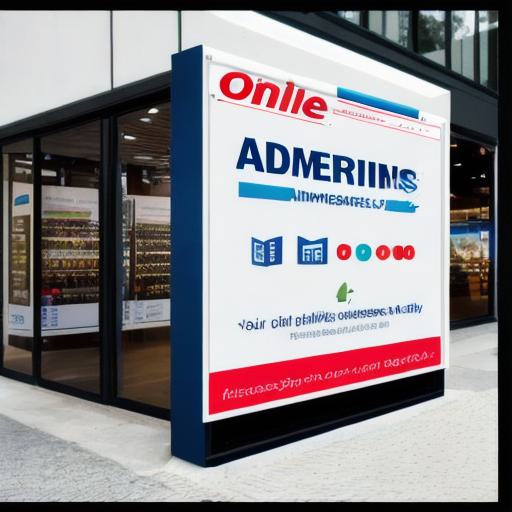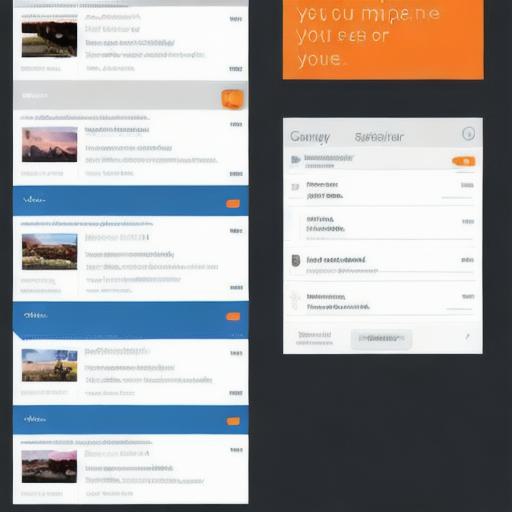In today’s digital age, businesses are constantly searching for ways to connect with their target audience and increase brand awareness. While online marketing tools like social media advertising and email campaigns have proven to be effective, offline marketing tools should not be overlooked. In fact, many successful businesses still rely on traditional marketing methods to drive sales and build customer loyalty.
In this article, we will explore the most effective offline marketing tools for businesses, along with case studies and expert opinions to help you make informed decisions about your own marketing strategy. We will also provide practical tips on how to implement these tools effectively and measure their success.
Direct Mail Marketing: The Power of Personalized Letters

Direct mail marketing is a form of advertising that involves sending physical letters or packages directly to consumers or businesses. Despite the rise of digital communication, direct mail remains a highly effective way to reach potential customers. Here are some reasons why:
- Personalization: Direct mail allows you to customize your message for each individual recipient. You can use their name, address, and other personal information to make the letter feel more relevant and engaging. This level of personalization can increase open rates and response times significantly.
- Targeting: With direct mail, you can target specific groups of people based on demographics such as age, income, or location. This means that your message is more likely to resonate with the people who are most likely to be interested in your product or service.
- High Response Rates: According to a study by the Direct Mail Association, direct mail campaigns have an average response rate of 4.6%. By comparison, email campaigns have an average response rate of just 0.9%. This means that direct mail is a highly effective way to generate leads and increase sales.
Case Study: Sephora
Sephora, the popular beauty retailer, has been using direct mail marketing for years with great success. The company sends personalized letters to its customers, offering them exclusive discounts and promotions based on their purchase history. This approach has helped Sephora build a loyal customer base and increase sales. According to Sephora’s CEO, Jean-Roland Dubois, "Direct mail is still very effective for us. We use it to communicate with our VIP customers and offer them exclusive deals that they can’t get anywhere else."
Print Advertising: The Impact of Visual Appeal
Print advertising involves placing ads in newspapers, magazines, or other printed publications. While print media may seem old-fashioned, it still remains an effective way to reach a large audience and build brand recognition. Here are some reasons why:
- Visual Impact: Print advertising allows you to use high-quality images and graphics to grab the reader’s attention and convey your message quickly and effectively. This can be especially important for products that are highly visual, such as cosmetics or fashion.
- Trustworthiness: Many people still view print media as a more trustworthy source of information than online sources. This means that print ads may be more effective at building brand trust and credibility.
- Targeting: Print media allows you to target specific groups of people based on demographics such as age, income, or location. This means that your message is more likely to resonate with the people who are most likely to be interested in your product or service.
Case Study: Nike
Nike has been using print advertising to promote its products for decades. The company’s iconic "Just Do It" campaign, which began in 1989, has become one of the most successful advertising campaigns of all time. According to Nike’s former CEO, John Donahoe, "Print advertising allowed us to communicate our brand message in a way that was both memorable and impactful. It helped us build a strong identity that resonated with our target audience."
Outdoor Advertising: The Power of Placement
Outdoor advertising involves placing ads on billboards, bus stops, or other public spaces. While outdoor advertising may seem like an afterthought for many businesses, it can be a highly effective way to reach a large audience and increase brand awareness. Here are some reasons why:
- Visibility: Outdoor advertising allows you to place your message in high-traffic areas where people are likely to see it repeatedly. This can help build recognition and increase the likelihood of customers making a purchase.
- Targeting: Outdoor advertising allows you to target specific groups of people based on demographics such as age, income, or location. This means that your message is more likely to resonate with the people who are most likely to be interested in your product or service.
- Creativity: Outdoor advertising often requires creativity and innovation to make an impact. By using eye-catching graphics or interactive displays, you can create ads that stand out from the crowd and grab people’s attention.
Case Study: Coca-Cola
Coca-Cola has been using outdoor advertising for years to promote its products. The company’s iconic "Share a Coke" campaign involved placing personalized Coke bottles in vending machines around the world, encouraging people to share them with friends and family. This approach helped build brand loyalty and increase sales, and was later adapted into a print advertising campaign as well. According to Coca-Cola’s former CEO, Muhtar Kent, "Outdoor advertising allowed us to connect with our target audience on an emotional level, which is crucial for building long-term relationships."
Event Marketing: The Power of Experiences
Event marketing involves creating and hosting events that are designed to promote a product or service. While event marketing can be expensive, it can also be highly effective at generating buzz and building brand awareness. Here are some reasons why:
- Engagement: Events provide opportunities for businesses to engage with their target audience in person. This allows them to build relationships and gather valuable feedback that can be used to improve their products or services.
- Exclusivity: By creating exclusive events, businesses can create a sense of urgency and scarcity around their products or services. This can encourage people to make a purchase before the event is over.
- Memorability: Events are often remembered long after they have taken place, which can help build brand recognition and increase repeat business.
A PLACE FOR A PICTURE #2
Case Study: Apple
Apple has been using event marketing to promote its products for decades. The company’s iconic product launches, such as the iPhone and iPad, have become highly anticipated events that generate massive media coverage and buzz. According to Apple’s former CEO, Steve Jobs, "Events are a powerful way to create excitement and build anticipation around our products. They allow us to connect with our customers in person and show them firsthand what we have created."
Television Advertising: The Impact of Storytelling
Television advertising involves placing ads on TV programs or networks. While television advertising can be expensive, it can also be highly effective at reaching a large audience and building brand awareness. Here are some reasons why:
- Storytelling: Television advertising allows businesses to tell stories that connect with their target audience on an emotional level. By telling compelling stories about their products or services, businesses can build trust and credibility with potential customers.
- Targeting: Television advertising allows you to target specific groups of people based on demographics such as age, income, or location. This means that your message is more likely to resonate with the people who are most likely to be interested in your product or service.
- Flexibility: With the rise of digital TV and streaming services, businesses can now target specific programs or networks that align with their target audience. This allows them to reach people who are most likely to be interested in their products or services.
Case Study: McDonald’s
McDonald’s has been using television advertising to promote its products for decades. The company’s iconic "I’m Lovin’ It" campaign, which began in 1972, has become one of the most successful advertising campaigns of all time. According to McDonald’s former CEO, Jack Schafer, "Television advertising allowed us to communicate our brand message in a way that was both memorable and impactful. It helped us build a strong identity that resonated with our target audience."
Conclusion
While online advertising can be highly effective at reaching a large audience quickly, it is not the only option available. In fact, traditional forms of advertising such as print, outdoor, and television advertising can still be highly effective at generating buzz and building brand awareness. By understanding their target audience and choosing the right channels for their message, businesses can create advertising campaigns that resonate with potential customers and drive sales.




